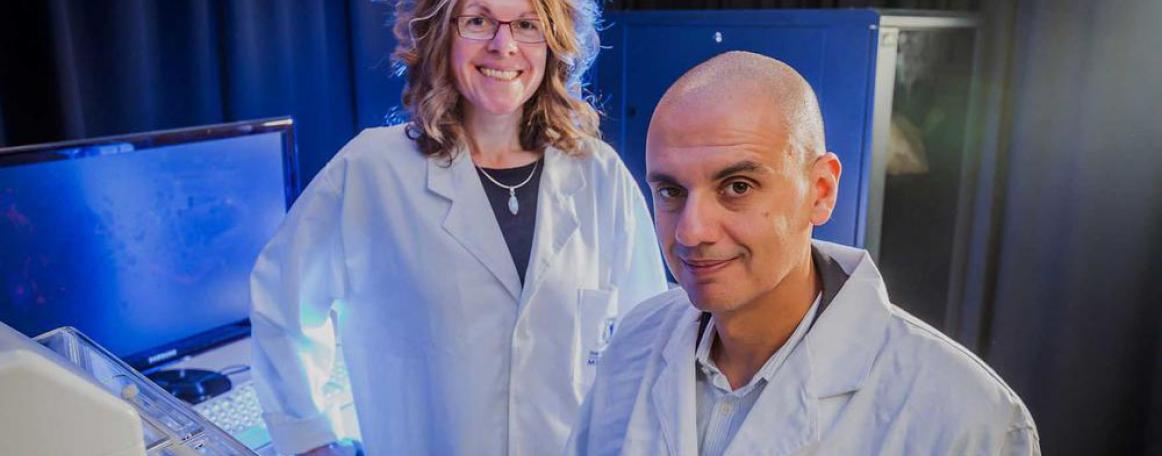Researchers are using neural engineering to tackle conditions such as autism and epilepsy.
One very human problem, but with multiple paths to a solution being sought under one roof.
That is the driving concept of the University of Melbourne’s Centre for Neural Engineering. Supported by a generous donation from Qantas Chairman Leigh Clifford AO — an engineering alumnus — and his family, the centre sprang from the realisation that if different disciplines and their disparate skills were brought together, progress in understanding the brain would come faster.
Six laboratories utilise the ideas and skills of multiple disciplines to investigate the causes, and possible solutions, for conditions such as autism spectrum disorder, epilepsy and schizophrenia.
The centre’s Integrative Biological Psychiatry Laboratory is seeking to understand the underlying causes of these disorders from a biological perspective. “Next of kin of patients have kindly donated real brains or brain tissue for study, or in the case of epilepsy, we have access to real patients,” says the centre’s director, Professor Stan Skafidas. Those working with post-mortem brain material are creating new imaging techniques to see how the neurons and synapses are different in sufferers of the disorders.
Meanwhile, the centre’s Stem Cells and Disease Models Laboratory is reprogramming skin cells into stem cells to study the same disorders, along with the actual background genetic make-up of sufferers, creating what is colloquially called a “brain in a dish” — a lentil-sized collection of cells with the same brain patterning as the individual from whom the skin cell was taken.
One problem, two laboratories using different methods to seek an answer.
Professor Skafidas is the inaugural holder of the Clifford Chair at the centre. Its other laboratories involve bionics, computational biology, computational neurobiology and sensors and imaging.
The centre’s focus is human health. Much is being done to develop new sensors for implantation in the body, including devising sensors from “bio-resolvable materials” that break down once their work is done. Professor Skafidas explains how the team is working with neurosurgeons at Royal Melbourne Hospital to come up with sensors — post-operation — that monitor the response of the tumour to treatment.
“Your phone can talk daily to the sensor and transmit that information to the clinician. You can see if the pH or the oxygen content in the vicinity of the tumour is changing, or how the tumour is responding to chemotherapy or it’s not.”
Patients will learn the outcome of their treatment sooner, while clinicians will gain a powerful research tool. “There’s been a one-shot element to brain surgery because it is so fraught with risk, so being able to get that information is invaluable,” he says.
“And the best thing is, the sensor disappears. That’s a flavour of where engineering meets medicine.”
Also under development is an improved bionic ear delivering higher fidelity than existing cochlear implants, and sensors which, set in the brain of someone with epilepsy, can detect an imminent seizure and apply a stimulus to prevent it.
Professor Skafidas says the Clifford family donation is critical, enabling the researchers to go down paths not well trodden.
It allows us to pursue a long-term strategy that, if it's right, will lead to a major breakthrough.
As leader of the centre’s stem cell laboratory, Associate Professor Mirella Dottori is working towards just such a breakthrough in treatment of the genetic disorder Friedreich’s ataxia, which causes progressive damage to the nervous system.
Ataxia is documented as affecting one in 30,000 people, but Dr Dottori believes its actual incidence is much higher. Its cause is a mutation that results in low levels of the frataxin protein which maintains iron levels within the body’s cells. “Their very low levels of this frataxin protein causes iron toxicity, the consequences of which are seen in the nervous system and in the heart, which is what eventually kills the patient,” Dr Dottori says. “The effect on the nervous system gives them ataxia, they lose balance and end up being in a wheelchair. Their cognitive function is fine but movement and balance is affected.”
The team has been collaborating with other Australian researchers and a US company, with positive results in lifting frataxin levels in nerve cells and heart cells. The team’s work in testing the compounds in more cell types is critical to whether the compounds proceed to clinical trials. “Patients only need a little more of this frataxin protein to have a very significant impact. It’s a disease where small steps can have a big impact.”
Find out more about Professor Stan Skafidas' research.
Find out more about Associate Professor Dottori’s research.
